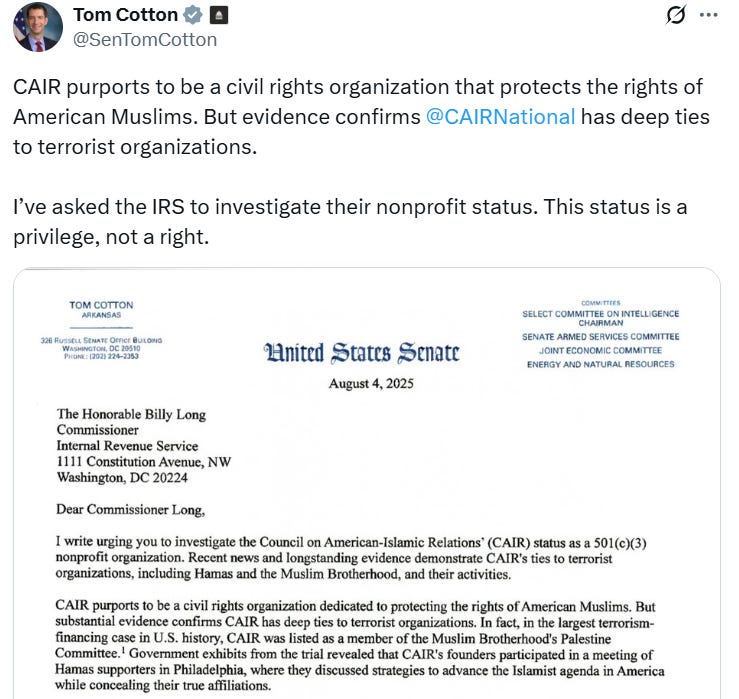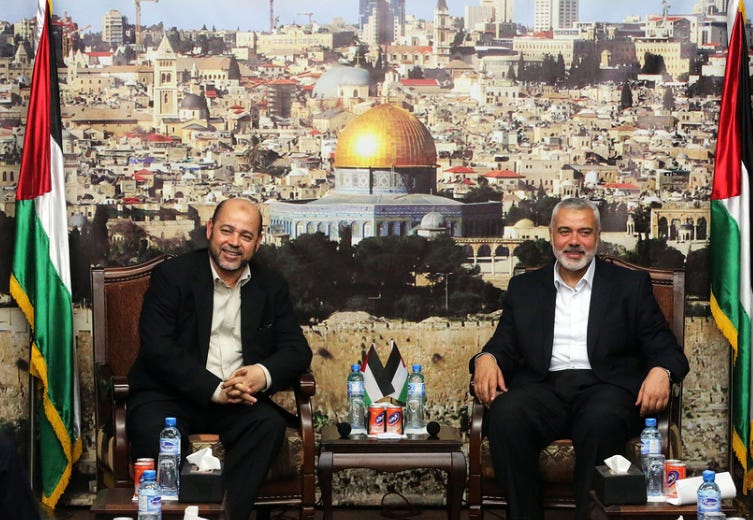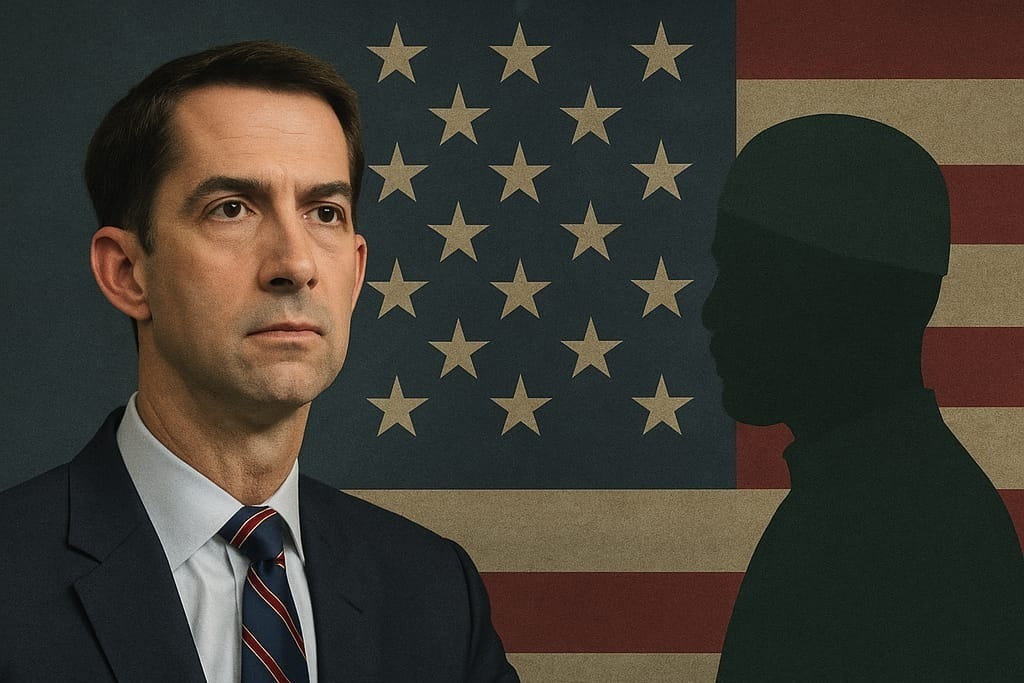Federal Scrutiny Intensifies Over CAIR's Alleged Terrorist Connections
Senator Tom Cotton cites "deep ties to terrorist organizations" in demanding investigation of Council on American-Islamic Relations (CAIR)'s tax-exempt status
In a significant escalation of congressional oversight, Senate Select Intelligence Committee Chairman Tom Cotton (R-Ark) has formally requested that the Internal Revenue Service investigate the Council on American-Islamic Relations (CAIR) for potential violations of its tax-exempt status, citing what he calls "deep ties to terrorist organizations." The Arkansas Republican's intervention signals a new chapter in a decades-old controversy surrounding America's largest Muslim civil rights organization.
Senator Cotton's August 4, 2025 letter to IRS Commissioner Billy Long comes just weeks after House Representative Randy Fine's (R-FL) introduction of H.R. 4097, the "Designate CAIR as a Terrorist Organization Act," marking the most comprehensive federal challenge to CAIR's legitimacy in recent years. This analysis examines the extensive documentary record — including FBI wiretaps, court evidence, and internal Muslim Brotherhood documents and Lorenzo Vidino’s 2023 report from George Washington University titled, “The Hamas Network in America” — which purports to trace CAIR's formation to the infamous 1993 Philadelphia meeting where groups formed by Hamas and the Muslim Brotherhood planned to create a "neutral" organization as a front for operations.

The Origins: Hamas as Palestinian Branch of Muslim Brotherhood
To understand the gravity of Cotton's allegations, one must trace the genealogy of Hamas itself. Founded in 1987 during the First Palestinian Intifada by Islamic scholar Ahmed Yassin, Hamas emerged as the Palestinian branch of the Muslim Brotherhood in Gaza. As stated explicitly in Hamas' own charter, the organization considers itself "one of the wings of the Muslim Brotherhood in Palestine.”
The Muslim Brotherhood's transnational network had been cultivating Palestinian supporters since the 1960s, when small numbers of Palestinians belonging to Brotherhood networks in Gaza and the West Bank began arriving in the United States as students and immigrants. This early infiltrated would prove instrumental in establishing what federal investigators later uncovered as a comprehensive Hamas support apparatus on American soil.

The 1988 American Campaign
The formation of Hamas (Muslim Brotherhood) in Palestine triggered immediate action in the United States. According to internal documents released in federal court during the landmark Holy Land Foundation terrorism financing trial, the head of the Palestine Section of the Muslim Brotherhood in the Middle East traveled to America in 1988, meeting with fellow Muslim Brotherhood members to seek support for the newly formed organization.
This meeting allegedly resulted in the formal establishment of the Palestine Committee of the Muslim Brotherhood in America, a subgroup composed primarily of members of Palestinian origin. The Committee's explicitly stated goals, according to a 1992 internal memorandum, included working to "increase the financial and the moral support for Hamas," to "fight surrendering solutions," and to publicize "the savagery of the Jews."
The Three-Headed Network: IAP, HLF, and UASR
According to the GWU report, The Palestine Committee was made up of three interconnected public-facing organizations that would serve as the visible apparatus for Hamas support activities. The Islamic Association for Palestine (IAP) functioned as the general-purpose propaganda arm, while the Occupied Land Fund—later renamed the Holy Land Foundation (HLF)—served as the financial conduit. Completing the triumvirate was the United Association for Studies and Research (UASR), which operated as a think tank providing intellectual cover for the network's activities.
These organizations, while presenting themselves as separate entities, were deeply interconnected through family ties, shared leadership, and coordinated operations. Evidence introduced during the HLF trial revealed an intricate web of relationships linking top Hamas leaders in Palestine with the American support network, including blood relationships between HLF officials and Hamas political bureau members.
The Holy Land Foundation Trial: America's Largest Terrorism Financing Case
The scale of the Hamas support network's operations became clear during the prosecution of the Holy Land Foundation from the PC. The subsequent trial, which concluded in 2008, resulted in the conviction of five HLF leaders for collecting approximately $12.4 million in support for Hamas—making it the largest successful terrorism financing prosecution in U.S. history.
This same trial brought to light the 1991 Muslim Brotherhood Explanatory Memorandum, which chillingly outlined the Muslim Brotherhood's ultimate objective in the United States:
"The process of settlement is a 'Civilization-Jihadist Process' with all the word means. The Ikhwan [Brotherhood] must understand that their work in America is a kind of grand Jihad in eliminating and destroying the Western civilization from within and 'sabotaging' its miserable house by their hands and the hands of the believers so that it is eliminated and God's [Allah's] religion is made victorious over all other religions."
During the trial, prosecutors introduced evidence that CAIR had been listed as an unindicted co-conspirator and was formally identified as a member of the Palestine Committee. The government presented documentation showing direct financial transfers from HLF to CAIR for "consulting services," which prosecutors argued further cemented the organizations' operational connections and shared ideological mission.
The Philadelphia Meeting: Blueprint for Deception
Perhaps the most damning evidence of the Hamas support network's strategic planning emerged from FBI wiretaps and subsequent transcript of a three-day meeting held at a Philadelphia Marriott hotel in October 1993. This gathering, attended by approximately twenty top leaders of the Palestine Committee, was secretly recorded by federal agents and the transcripts were later introduced as evidence during the Holy Land Foundation trial.
The meeting was convened in response to the signing of the Oslo Peace Accords, which the Palestine Committee viewed as a direct threat to Hamas's objectives and their own operations in America. Participants included key figures from IAP, HLF, and UASR, many of whom were allegedly connected by blood ties and shared the same Muslim Brotherhood ideology.

Strategic Deception Unveiled
The wiretapped conversations revealed the participants' sophisticated understanding of the need to conceal their true objectives from American authorities and the public. IAP President Omar Ahmed candidly acknowledged the dilemma they faced: "If you want to [talk to] the Americans, you lose the Muslims, if you address the Muslims, it means that you cannot reveal your address to the Americans."
The solution they developed was a deliberate strategy of deception. HLF President Shukri Abu Baker, whose brother Jamal was a Hamas leader, articulated this approach with startling clarity: "I swear by Allah that war is deception. We are fighting our enemy with a kind heart... Deceive, camouflage, pretend that you're leaving while you're walking that way. Deceive your enemy."
Planning a "Neutral" Front Organization
Most significantly for understanding CAIR's alleged origins, the Philadelphia meeting participants discussed the need to create a new organization that could operate without the obvious Hamas connections that had begun to compromise their existing entities. One unidentified speaker argued for forming "a new organization for activism which will be neutral because we are placed in a corner... there should be a new neutral organization which works on both sides."
Abu Baker elaborated on this concept, emphasizing the importance of camouflaging the new organization's identity: "Let's not hoist a large Islamic flag and let's not be barbaric-talking. We will remain a front so that if the thing [the U.S. government ban on Hamas] happens, we will benefit from the new happenings instead of having all of our organizations classified and exposed." According to the wiretaps, it was discussed that the new front organization would have it’s headquarters in Washington D.C. and would infiltrate every civil level of American society.
CAIR's Formation: Months After Philadelphia Meeting
The timing of CAIR's establishment is also suspect. Founded in Washington D.C. in June 1994—just months after the Philadelphia meeting—CAIR emerged with leadership drawn directly from the Palestine Committee structure that had been operating under increasing scrutiny. Additionally, a 1994 internal memorandum of the Palestine Committee recognized CAIR as one of its member organizations following its formation, together with IAP, UASR and HLF.
The overlap between the Philadelphia meeting attendees or Palestine Committee affiliates with CAIR's founding leadership are extensive and well-documented:
Omar Ahmed, who served as IAP President and attended the Philadelphia meeting, became CAIR's Chairman Emeritus
Nihad Awad, IAP's Public Relations Director who participated in the Philadelphia discussions, became CAIR's Executive Director—a position he holds to this day
Rafeeq Jabar, former IAP President, became a founding director of CAIR
Ibrahim Hooper, an IAP employee, became CAIR's Director of Communications
Ghassan Elashi, Holy Land Foundation treasurer who attended the Philadelphia meeting, became the founding board member of CAIR's Texas chapter
Implications for Tax-Exempt Status
Senator Cotton's letter to the IRS highlights a fundamental question about the appropriateness of tax-exempt status for organizations with alleged connections to designated terrorist groups. As Cotton noted in his correspondence, "Tax-exempt status is a privilege, not a right, and it should not subsidize organizations with links to terrorism."
The Internal Revenue Code requires that 501(c)(3) organizations operate exclusively for charitable, educational, or religious purposes and prohibits the provision of material support to terrorism. The alleged evidence of CAIR's origins within the Palestine Committee structure, combined with the continued presence of Philadelphia meeting participants in its leadership, raises substantial questions about the organization's compliance with these requirements.
This analysis is based on FBI documents, court records, congressional testimony, and academic reports. The evidence cited includes materials introduced during the Holy Land Foundation terrorism financing trial, the largest such prosecution in U.S. history.




What I also see is that Tom Cotton playing dirty for his own gratifications and agendas. He won't win.